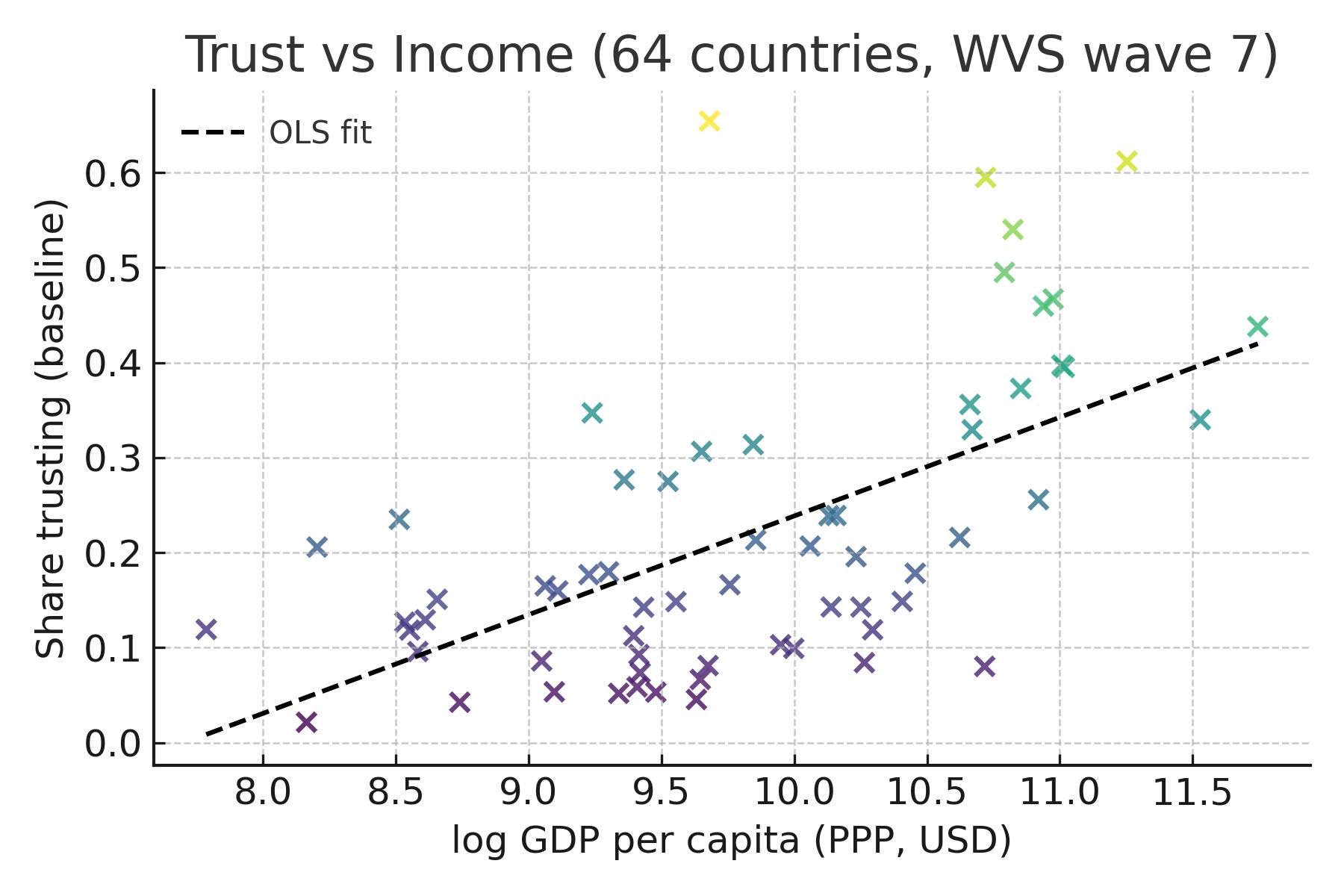Income and Interpersonal Trust
World Values Survey Wave 7
1. Motivation
Trust lubricates social and economic interaction. Classical growth models treat trust as an informal institution that lowers transaction costs; empirical work often finds that high‑trust societies grow faster and innovate more. Here we ask a simpler descriptive question: are richer countries also more trusting?
2. Data
- Coverage: 64 country‑surveys from WVS Wave 7 (2017‑2022).
- Income: GDP per capita, PPP‑adjusted USD (World Bank).
- Trust:
• Baseline – share answering “Most people can be trusted” (Q57).
• Alternative – average of Q59–Q63 (trust in neighbours, acquaintances, first‑time met, other religion, other nationality), reverse‑coded.
3. Exploratory pattern

Both the LOESS smoother and the dashed OLS line suggest a positive association. Annotated points mark extreme income positions (rich: MAC, SGP, NLD; poor: ETH, ZWE, TJK) and trust outliers.
4. Regression analysis
Baseline trust
β₁ = 0.104 (SE 0.018, p = 0.000, R² = 0.35)
Alternative trust index
β₁ = 0.137 (SE 0.030, p = 0.000, R² = 0.25)
5. Interpretation
A one‑unit rise in log‑income (≈ 2.7× GDP per capita) is associated with a 0.104-point increase in the share trusting (scale 0–1). While not large, this accounts for roughly 35% of cross‑country variation. Channels could include better governance, education and formal institutions in high‑income settings, which foster generalised trust. Reverse causality—trust as a driver of growth—remains plausible.
6. Limitations & robustness
- Cross‑section only; cannot infer causality.
- Small N; high‑trust outlier (CHN) influences slope.
- Aggregate averages hide within‑country disparities.
7. Short assignment prompt
For students:
- Replicate the scatter plot; label one additional country of your choice.
- Re‑estimate the regression adding a regional fixed effect (e.g. Europe vs. rest). How does β₁ change?
- Propose two mechanisms linking income and trust and outline an empirical strategy to test one of them.
- Critique the trust measures used here.
Prepared 21 Apr 2025